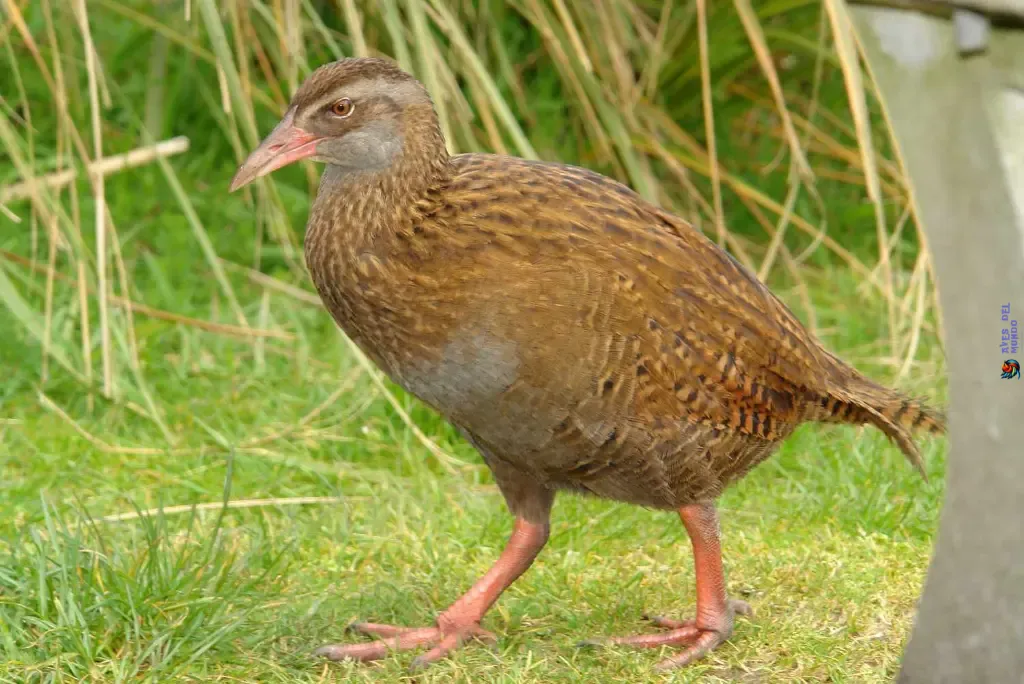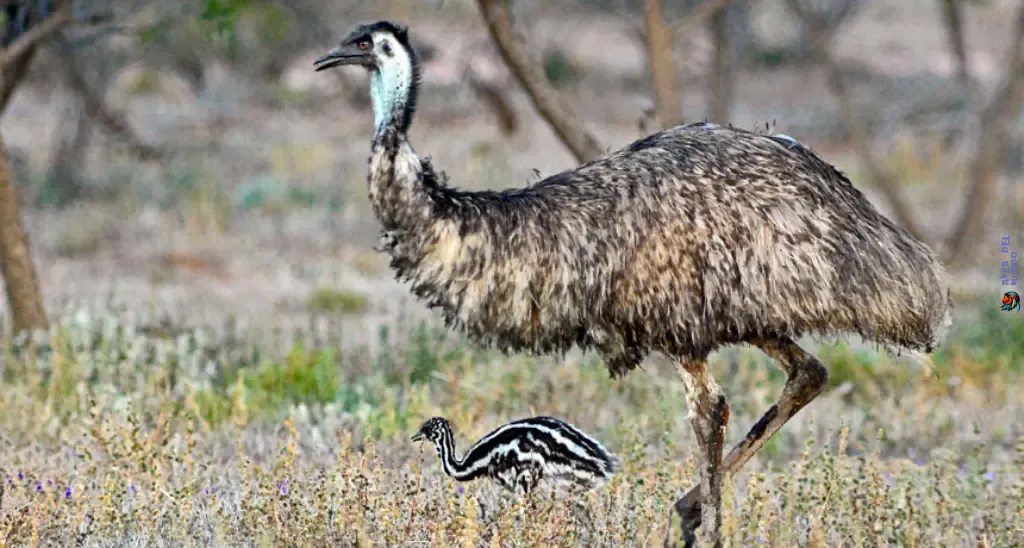Flightless birds are a unique and captivating group of avian species that have evolved to thrive without the ability to fly.
These birds have adapted to their environments in various ways, often developing strong legs for running, specialized diets, and unique behaviors. In this comprehensive blog, we will explore the evolution, types, habitats, and conservation efforts related to flightless birds. By the end of this article, you will have a deeper understanding and appreciation for these remarkable creatures.
Introduction to Flightless Birds




Flightless birds are a diverse group of birds that, as the name suggests, have lost the ability to fly through evolution. These birds can be found in various parts of the world, from the icy waters of Antarctica to the tropical forests of New Guinea. Despite their inability to take to the skies, flightless birds have thrived in their respective habitats, exhibiting a wide range of adaptations that enable them to survive and reproduce.
Key Characteristics
- Strong Legs: Most flightless birds have powerful legs adapted for running or swimming.
- Reduced Wing Size: Their wings are often smaller and less functional compared to those of flying birds.
- Specialized Habitats: Many flightless birds occupy niches where flying is less advantageous or necessary.
Evolution and Adaptation
The evolution of flightless birds is a fascinating process driven by a combination of environmental factors and genetic mutations. Flightlessness has evolved independently in various bird lineages, often as a response to the absence of predators or the need to adapt to a ground-dwelling lifestyle.
Evolutionary Pathways
- Island Gigantism: On isolated islands with few predators, some birds evolved into larger, flightless forms. Examples include the extinct dodo and the extant kiwi.
- Aquatic Adaptation: Penguins evolved to become adept swimmers, sacrificing flight for enhanced underwater agility.
- Predator-Free Environments: In areas with no significant land predators, such as New Zealand, several bird species lost the ability to fly.
Anatomical Changes
- Wing Reduction: Over time, the wings of flightless birds have become smaller and more adapted to their new modes of locomotion.
- Skeletal Modifications: Changes in bone structure, such as a more robust pelvis and legs, support their weight and running or swimming capabilities.
Major Types of Flightless Birds
Flightless birds can be broadly categorized into three main groups: ratites, penguins, and other flightless birds. Each group has distinct characteristics and evolutionary histories.
Ratites
Ratites are a group of large, flightless birds with a flat breastbone (sternum) that lacks the keel to which flying birds’ wing muscles attach. This group includes some of the largest birds in the world.
Examples of Ratites:
- Ostrich: The largest living bird, native to Africa. Ostriches can run at speeds of up to 70 km/h (43 mph).
- Emu: The second-largest bird, native to Australia. Emus are strong runners and can travel long distances.
- Rhea: Native to South America, rheas are similar to ostriches and emus in appearance and behavior.
- Kiwi: Native to New Zealand, kiwis are small, nocturnal birds with a keen sense of smell.
| Species | Habitat | Size (Height) | Unique Traits |
|---|---|---|---|
| Ostrich | Africa | 2.7 meters | Fast runner, largest bird |
| Emu | Australia | 1.9 meters | Long-distance runner |
| Rhea | South America | 1.5 meters | Adaptable to various habitats |
| Kiwi | New Zealand | 45 cm | Nocturnal, excellent sense of smell |
Penguins
Penguins are highly adapted to aquatic life. Unlike other flightless birds, penguins have evolved flippers instead of wings, allowing them to «fly» through the water with remarkable agility.
Examples of Penguins:
- Emperor Penguin: The largest penguin species, known for its remarkable breeding behavior in the harsh Antarctic winter.
- King Penguin: Second only to the emperor penguin in size, found in sub-Antarctic regions.
- Adélie Penguin: A smaller species that breeds along the entire Antarctic coast.
- Galápagos Penguin: The only penguin species found north of the equator, living in the Galápagos Islands.
| Species | Habitat | Size (Height) | Unique Traits |
|---|---|---|---|
| Emperor Penguin | Antarctica | 1.2 meters | Breeds during Antarctic winter |
| King Penguin | Sub-Antarctic | 1 meter | Distinctive orange patches on head |
| Adélie Penguin | Antarctica | 70 cm | Breeds on ice-free land |
| Galápagos Penguin | Galápagos Islands | 50 cm | Lives in tropical environment |
Other Flightless Birds
In addition to ratites and penguins, there are several other flightless birds that do not fit into these categories but have interesting adaptations of their own.
Examples:
- Cassowary: A large, powerful bird native to the tropical forests of New Guinea and Northern Australia, known for its striking blue and black plumage and a casque on its head.
- Kakapo: A critically endangered, nocturnal parrot native to New Zealand, with a distinctive green plumage.
- Flightless Cormorant: Found in the Galápagos Islands, this bird has vestigial wings and is an excellent swimmer.
| Species | Habitat | Size (Height) | Unique Traits |
|---|---|---|---|
| Cassowary | New Guinea, Australia | 1.8 meters | Powerful legs, casque on head |
| Kakapo | New Zealand | 60 cm | Nocturnal, green plumage |
| Flightless Cormorant | Galápagos Islands | 89 cm | Vestigial wings, excellent swimmer |
Habitats and Distribution
Flightless birds are found in a variety of habitats across the globe, from tropical forests to arid savannas and icy waters. Their distribution is often linked to the presence of predator-free environments or specific ecological niches.
Key Habitats
- Savannas and Grasslands: Home to ostriches and rheas, these open landscapes provide ample space for running.
- Forests: Dense forests of New Guinea and New Zealand are ideal for cassowaries and kiwis.
- Antarctic and Sub-Antarctic Regions: Penguins thrive in these cold environments, relying on the ocean for food.
- Isolated Islands: Species like the kiwi and kakapo evolved in predator-free island ecosystems.
| Habitat | Notable Species | Key Characteristics |
|---|---|---|
| Savannas/Grasslands | Ostrich, Rhea | Open landscapes, dry climate |
| Forests | Cassowary, Kiwi | Dense vegetation, high biodiversity |
| Antarctic Regions | Emperor Penguin, Adélie Penguin | Extreme cold, ice-covered landscapes |
| Isolated Islands | Kakapo, Flightless Cormorant | Limited predators, unique ecological niches |
Behavior and Diet
The behavior and diet of flightless birds are as diverse as the environments they inhabit. Their adaptations are often closely tied to their inability to fly, leading to unique feeding strategies and social structures.
Feeding Strategies
- Herbivorous Diets: Many flightless birds, such as ostriches and rheas, are primarily herbivorous, feeding on a variety of plants, seeds, and fruits.
- Carnivorous Diets: Penguins are predominantly carnivorous, feeding on fish, squid, and other marine life.
- Omnivorous Diets: Some species, like cassowaries, have an omnivorous diet, consuming fruits, small animals, and insects.
| Species | Diet Type | Primary Food Sources |
|---|---|---|
| Ostrich | Herbivorous | Grasses, seeds, fruits |
| Emperor Penguin | Carnivorous | Fish, squid, krill |
| Cassowary | Omnivorous | Fruits, small animals, insects |
| Kiwi | Omnivorous | Insects, worms, berries |
Social Behavior
- Solitary: Some flightless birds, such as the kiwi and kakapo, are mostly solitary, interacting primarily during the breeding season.
- Social: Penguins are known for their complex social structures and large breeding colonies. Ostriches and rheas also exhibit social behavior, often forming groups for feeding and protection.
| Species | Social Structure | Notable Behaviors |
|---|---|---|
| Kiwi | Solitary | Nocturnal, strong sense of smell |
| Emperor Penguin | Social | Breeds in large colonies, cooperative chick rearing |
| Cassowary | Solitary | Territorial, aggressive when threatened |
| Rhea | Social | Forms flocks, communal nesting |
Conservation Status and Efforts
Many flightless birds are currently facing significant conservation challenges due to habitat loss, climate change, and human activities. Efforts to protect these species are crucial for their survival.
Threatened Species
- Kakapo: Critically endangered with a population of around 200 individuals, primarily due to introduced predators and habitat destruction.
- African Penguin: Endangered, with populations declining due to overfishing, oil spills, and climate change.
- Kiwi: Several species of kiwi are endangered or vulnerable, with threats including habitat loss and predation by introduced species.
| Species | Conservation Status | Major Threats |
|---|---|---|
| Kakapo | Critically Endangered | Introduced predators, habitat destruction |
| African Penguin | Endangered | Overfishing, oil spills, climate change |
| Kiwi | Various (Endangered, Vulnerable) | Habitat loss, introduced predators |
Conservation Efforts
- Breeding Programs: Captive breeding and reintroduction programs, such as those for the kakapo and kiwi, are helping to boost population numbers.
- Habitat Protection: Efforts to preserve and restore natural habitats are crucial for the survival of many flightless birds.
- Public Awareness: Raising awareness about the plight of flightless birds and encouraging conservation actions through education and advocacy.
| Conservation Strategy | Description | Notable Examples |
|---|---|---|
| Breeding Programs | Captive breeding and reintroduction efforts | Kakapo Recovery Program, Kiwi Conservation |
| Habitat Protection | Preserving and restoring natural habitats | Marine reserves for penguins, forest reserves |
| Public Awareness | Educational campaigns and advocacy | International Penguin Day, World Kiwi Day |
Interesting Facts
- Fastest Bird on Land: The ostrich is the fastest bird on land, capable of running at speeds up to 70 km/h (43 mph).
- Deepest Diving Bird: The emperor penguin holds the record for the deepest dive, reaching depths of over 500 meters (1,640 feet).
- Smallest Flightless Bird: The Inaccessible Island rail, found on Inaccessible Island in the South Atlantic Ocean, is the smallest flightless bird, measuring just 13-15 cm (5-6 inches) in length.
- Unique Reproduction: The male emperor penguin incubates the egg on his feet, keeping it warm with a special brood pouch.
| Fact | Details |
|---|---|
| Fastest Bird on Land | Ostrich, up to 70 km/h (43 mph) |
| Deepest Diving Bird | Emperor Penguin, over 500 meters (1,640 feet) |
| Smallest Flightless Bird | Inaccessible Island rail, 13-15 cm (5-6 inches) |
| Unique Reproduction | Male emperor penguin incubates egg on feet |

Flightless birds are a remarkable and diverse group of animals that showcase the incredible adaptability of nature. From the sprawling savannas of Africa to the icy waters of Antarctica, these birds have found ways to thrive without the ability to fly.
Understanding their evolution, behavior, and the challenges they face is crucial for their conservation and the protection of the unique ecosystems they inhabit. By raising awareness and supporting conservation efforts, we can help ensure that these extraordinary birds continue to grace our planet for generations to come.
Flightless birds have captivated human curiosity for centuries, embodying the beauty and complexity of evolutionary adaptation. Through dedicated research and conservation, we can continue to learn from and protect these unique avian species, ensuring their survival in a rapidly changing world.